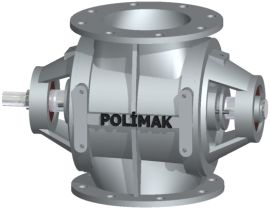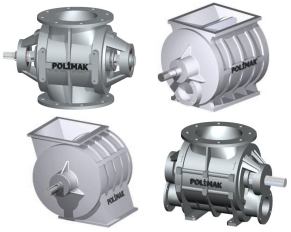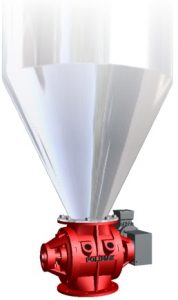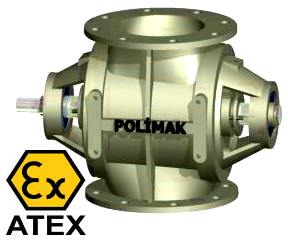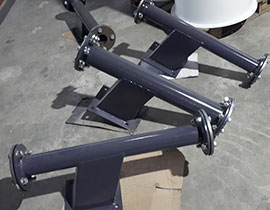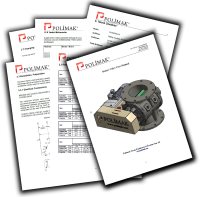Atex certified rotary valves play an important role in bulk material handling industries that process combustible dry bulk materials. They are used to help reduce or isolate explosion propagation in instances where a combustible cloud ignites. Polimak’s ATEX rotary valves are certified with 10 bar explosion tests.
An ATEX certified rotary valve does not cause a risk for explosion, hence it is an ideal choice for explosive zones. All rotary valve components such as rotary valve rotors, rotary valve endplates etc., comply with ATEX regulations and provide ex-proof characteristics. An ATEX certified airlock valve can be used in the food industry and many other industries that handle combustible dry bulk solids.
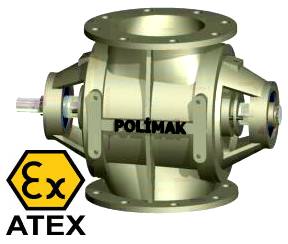
Explosion isolation and flame proof
In a case where a dust cloud ignite during material handling, there are various ways of stopping a flame from spreading throughout a production line. One of the way to do so is by using isolation the flame by using ATEX certified equipment – rotary valves. They designed in such a way that they can stop a flame wave and resist or reduce the explosion pressure impact. This is commonly referred to as flame resistance and explosion isolation. Coal powder, sugar powder and flour are some examples of combustible bulk materials. For a rotary valve to be used in industrial sectors that handle inflammable bulk materials, the rotary valve must be ATEX certified.
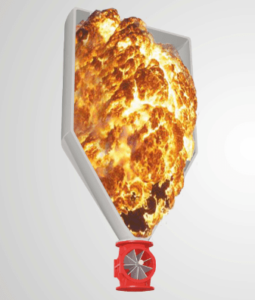
ATEX zone classification
Industries are to classify the areas of the explosive atmospheres into zones according to the ATEX directive. The probability of the explosion developing and how long it will persist if developed, determines the location, size, and classification of the zone. The zone classification for hazardous clouds of dust and fibres are;
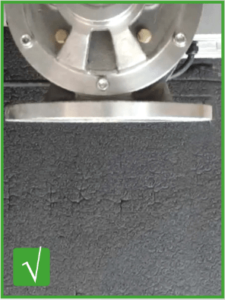
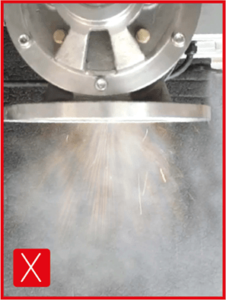
ATEX zone classification
Industries are to classify the areas of the explosive atmospheres into zones according to the ATEX directive. The probability of the explosion developing and how long it will persist if developed, determines the location, size, and classification of the zone. The zone classification for hazardous clouds of dust and fibres are;
ZONE 20
This is an explosive atmosphere with a combustible dust cloud that is likely to ignite frequently and extensively.
ZONE 21
This is an explosive atmosphere containing a combustible cloud that ignites less frequently and less extensively compared to that of Zone 20.
ZONE 22
In this zone, the explosive atmosphere contains a combustible dust cloud that ignites less frequently than in the aforementioned zones and occurs for a short period.
For the ones that involve hazardous gas, mist or vapour, the zones can be classified as follows.
ZONE 0
This comprises areas where an explosive atmosphere containing dangerous gas, vapour or mist may combust frequently for an extended period.
ZONE 1
This includes areas where the explosive atmosphere with hazardous vapour, mist or gas is likely to combust less frequently and less extensive compared to the effects in Zone 0.
ZONE 2
An explosive atmosphere containing gas, vapour or mist that ignites less frequently and occurs for a short period compared to Zones 0 and 1.
